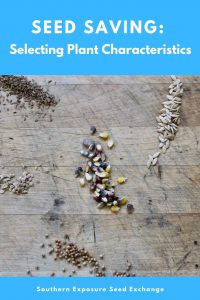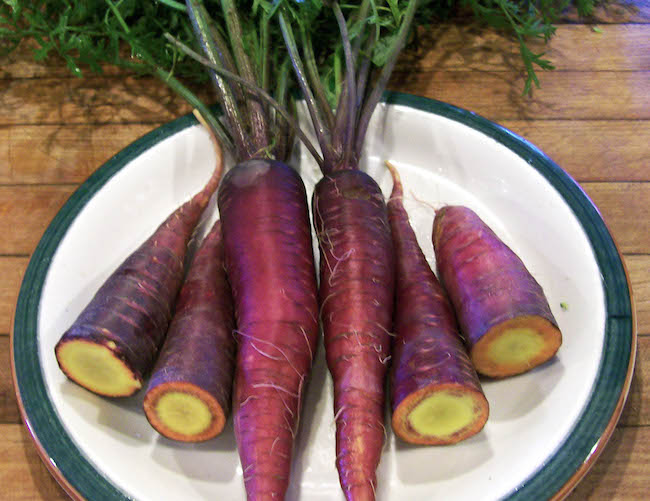
When compared to the history of agricultural being able to order seeds each year is a relatively new thing. For thousands of years, seed saving was simply a part of gardening. This family tradition created the heirlooms we know today and adapted varieties to specific local conditions.
Whenever we save seeds we’re making decisions about what future generations of plants will look like. Saving seed for next year takes careful consideration. Especially with easy to save species like potatoes or garlic it can be tempting to plant whatever is leftover or whatever you don’t want to cook with but it’s important to remember this will affect future harvests. Take a look at some of the traits you should consider when saving seed.
Vigor
This is a plant’s ability to germinate well and quickly grow into a healthy, productive plant.
Earliness
Even if you have a relatively long season, selecting for early production may be desirable. Plants that mature quickly can allow you to enjoy produce earlier in the year, avoid the intense heat of late summer, avoid certain pests, or allow you to harvest multiple crops.
Trueness-to-type
If you’re trying to help preserve an heirloom variety you want to be sure to save only save seeds from plants that are true to type, displaying the characteristics unique to that variety.
Disease and Insect Resistance
Saving seed from year to year can adapt a variety to better withstand your local pests and diseases.
Tolerance to Drought or Excess Moisture
This trait is another way you can adapt a variety to your specific garden location.
Stockiness
Tall, spindly plants can be prone to lodging and other problems and often need additional trellising. Stocky plants are often healthy plants. Note, this trait can also be affected by nutrient availability and how closely you space your plants.
Hardiness
Particularly for crops grown in early spring or late fall you want to select for plants that withstand cold temperatures.
Lateness to Bolt
Avoid saving seed from the first plants that go to seed. Selecting for those that bolt later will increase your harvest period.
Color
It may not seem as important as disease resistance or flavor but often times their unique color is why people fall in love with an heirloom variety. Selecting for the most intense Purple Dragon Carrots is part of what makes the variety special.
Uniformity or Lack of It
This trait will depend upon your variety. You may want all of your green arrow pea plants to be a uniform height but obviously, you don’t want your rainbow swiss chard to have a uniform color.
Flavor
One of the best things about heirlooms is their amazing flavor! Always take this into consideration in your seed saving endeavors. Life is too short for tasteless vegetables.
Flesh Characteristics
This trait will largely depend on a variety’s purpose. Tomatoes like Principe Borghese which were bred for drying should have much less moisture than slicers like Radiator Charlie’s Mortgage Lifter.
Size and Shape
If you love stuffed jalapenos save seed from the biggest peppers. This is another great way to make a variety work for you.
Productivity
Don’t eat your biggest, best cabbages even though it’s tempting. Let those go to seed so that in a few years more of your cabbages will resemble the best.
Storage Ability
Although it may seem less important in modern times when everyone has a fridge and freezer, storage ability should still be considered particularly in plants like storage tomatoes, pumpkins, winter squash, sweet potatoes, etc.
There are so many qualities to consider when selecting seeds it can be tough to keep track. One thing you can do to mark a specific plant is to loosely tie a bright colored piece of yarn around it. This will allow you to remember which plants displayed traits like vigor when it’s time to harvest seed. Be sure to keep an eye on the yarn as the plant grows so it doesn’t get too tight and harm the plant. Alternatively, you can place small stakes in front of plants to mark them.
Pin it for later.


